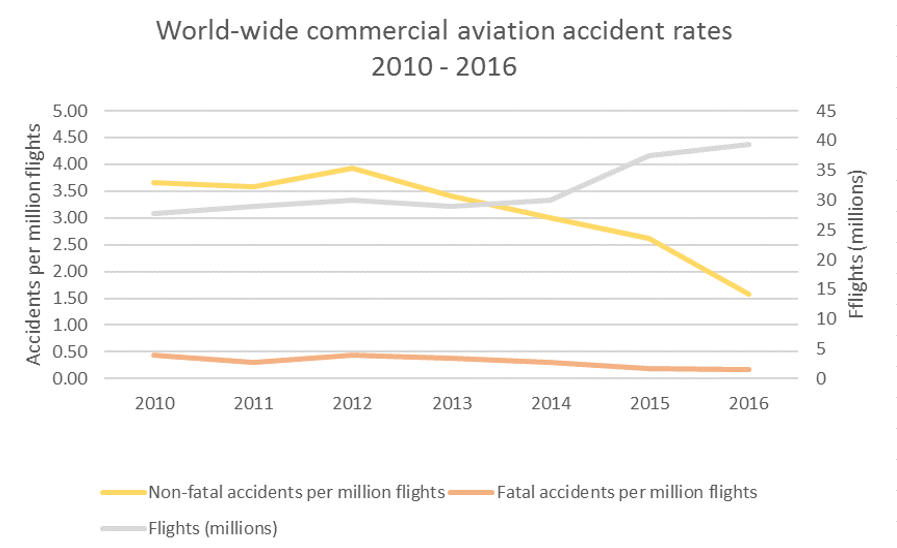Despite high-profile tragedies, 2016 was one of the safest years ever for air travel
Safety expert urges shift in focus to improving security

Despite the high-profile losses of an Egyptair flight in May and a LaMia jet carrying a Brazilian football team in November, 2016 was one of the safest years on record for aviation.
Worldwide, there were just five fatal accidents involving civil passenger airliners. In addition, an attempted inflight bombing on a flight in Somalia killed only the perpetrator, and a firefighter died tackling the blaze when an Emirates plane crashed on landing in Dubai; all on board survived.
The international aviation consultancy based in the Hague, to70, has counted 271 deaths in the seven fatal events. In addition, 64 aircraft were involved in crashes without loss of life.
Adrian Young, Senior Aviation Consultant for to70, said: “Whilst any accident is too many, we would argue that such low accident rates demonstrate the effectiveness of aviation safety standards in mitigating flight safety risks.
“The survival of all passengers and crew aboard the Emirates flight is testament to the excellent aircraft design standards and the capable responses of cabin crew and firefighters.”
The worst accident of 2016 involved the LaMia jet that ran out of fuel close to the Colombian city of Medellin on 28 November. Almost all of the squad of a top Brazilian football team, Chapecoense, were among the 71 victims on the flight from Santa Cruz in Bolivia. The RJ85 commuter aircraft was operating way beyond the normal limits on fuel reserves and at the extreme of the aircraft’s range.
Mr Young said: “The fuel exhaustion crash of LaMia flight 2933, while tragic, does not warrant additional regulation as the cause appears to be a deliberate unsafe act by the operator and crew.”
But he warned: “The number of incidents due to unlawful interference is cause for concern.”
The second-highest death toll was on 19 May: 66 people died when an Egyptair Airbus A320 came down in the Mediterranean. It has been reported that traces of explosives have been found on the bodies of the victims of flight 804 from Paris to Cairo.
Such events, said Mr Young, present “a compelling case for shifting improvement efforts from aircraft safety to airport security”.
The death toll in the two previous years was significantly higher. In 2015, 471 people died in four crashes, including a Metrojet flight from Sharm el Sheikh to St Petersburg, Russia, which killed 224, and a Germanwings service from Barcelona to Dusseldorf whose first officer, Andreas Lubitz, killed all 150 on board by flying his Airbus A320 into the French Alps,
In 2014, 864 people died in five crashes. The death toll was particularly high because of two Malaysia Airlines 777s that crashed: MH370, whose fate is still unknown, and MH17, downed by a missile over eastern Ukraine.
The UK has a remarkably good air safety record, with no fatal accidents involving a British airline since the 1980s. The 28th anniversary of the 1989 Kegworth disaster involving a British Midland Boeing 737, in which 47 people died, is on 10 January.
Subscribe to Independent Premium to bookmark this article
Want to bookmark your favourite articles and stories to read or reference later? Start your Independent Premium subscription today.

Join our commenting forum
Join thought-provoking conversations, follow other Independent readers and see their replies